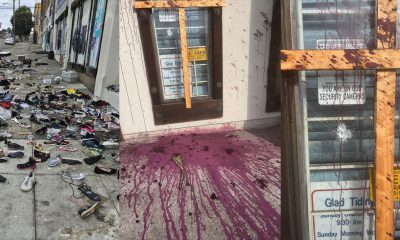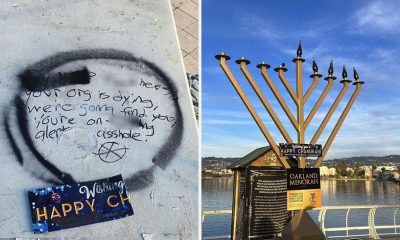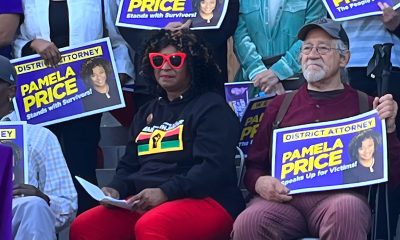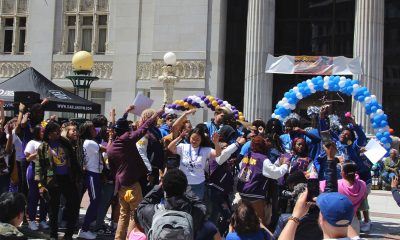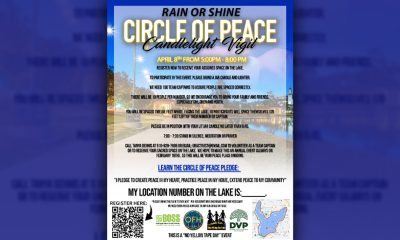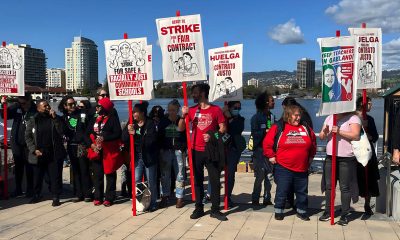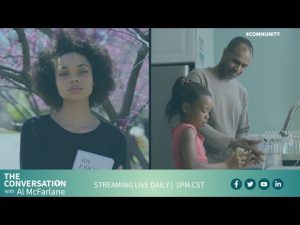Activism
Black Vendor Group Flourishes on Oakland’s Lake Merritt
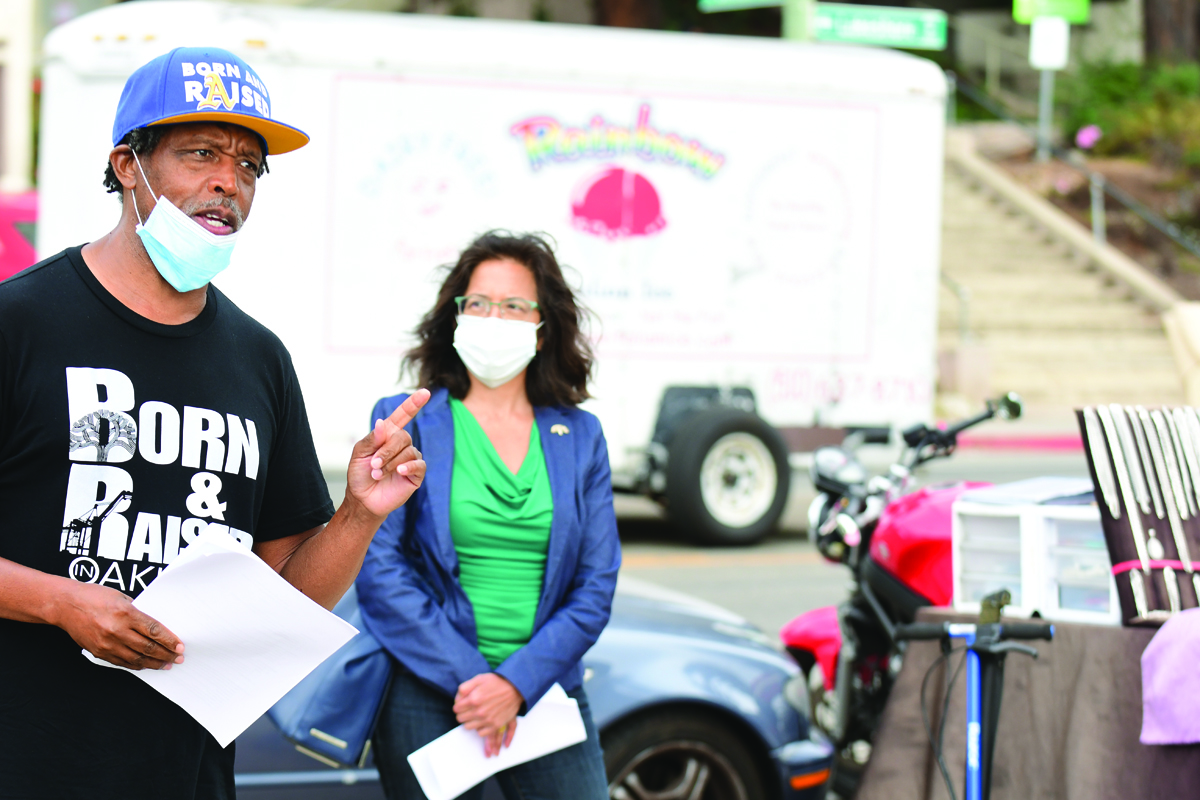
What started out to be a protest against a purportedly racial-bias incident on the shores of Lake Merritt near the Cleveland Cascades in April 2018, has turned into a weekly, weekend gathering where vendors can showcase their products and services to the public.
The incident was sparked by an individual known as ‘BBQ Becky.’ Becky called police on a Black family who were peacefully having a picnic at the Lake. At first, there was a protest staged by members of the victimized family that brought out musicians, poets dancers and other entertainment as well as vendors selling crafts, clothing, wares and food. Every weekend since that incident, Black folks have been gathering at the same area, barbequing and staging community activities.
In the past few months, Black entrepreneurs (mostly micro-businesses) have been pitching their tents, displaying their products and selling everything from ice cream, to T-shirts, to hair products at the Lake. The enterprise is thriving full-force, which includes dozens of entrepreneurs and first –time sellers that have bolstered the area’s Black economy.
While City officials aren’t completely supportive of the event due to the COVID-19 pandemic, the Black vendors have met and have implemented plans to ensure health and safety codes are not being violated by the vendors.
Spokesperson James Copes of ‘Old School Copes’ noted that precautions to ensure health and safety guidelines are in place and being practiced. “Each vendor booth participating at our event is supplied with free face masks and hand sanitizers for our customers when they visit our booths,” Copes noted. “Additionally, all vendors along Lakeshore are encouraging people to social distance while browsing among the booths.”
“We don’t have the ability to force people to follow certain safety rules, but we make it a point to inform them that when entering any booth, they must adhere to the regulations we have set in place.”
Oakland City Councilmember Nikki Fortunato Bas, whose district covers the Lake Merritt area, has been supportive of what the Black vendors are doing. “This marketing enterprise is encouraging and brings a much-needed boost to the economy of the Black community,” said Bas.
“Especially during COVID, we have to follow the rules and policies set forth by the County and City and to work with the City Administration to ensure the public’s safety. Oakland’s Parks and Recreation Advisory Commission will be meeting on August 12th on how the public can use the parks, including the Lake Merritt.”
“The vendors will continue to serve customers on the Lake,” said Copes. “It’s important to them economically. People are wondering how they’re going to make it and pay their bills. This has been one way to help people subsidize their income and develop and grow their business.
“But it’s not just about selling products; we are bringing people together and having conversations about our daily lives and how we can work collectively. We are creating community.”
“We are buying and spending monies with each other. This is helping people to become self-reliant. That’s how Black enterprises should work. Additionally, non-profit groups have joined the vendors to do fundraising projects.”
“We will continue to be respectful of the people who live in the neighborhood. We will remind people not to park in people’s driveways, and we will shut down at 8:00 p.m. and clean up the areas around each booth.”
For more information on the Black vendors’ group, email oldschoolcopes@gmail.com.
Activism
Oakland Post: Week of April 17 – 23, 2024
The printed Weekly Edition of the Oakland Post: Week of April 17 – 23, 2024

To enlarge your view of this issue, use the slider, magnifying glass icon or full page icon in the lower right corner of the browser window. ![]()
Activism
Oakland Schools Honor Fred Korematsu Day of Civil Liberties
Every Jan. 30, OUSD commemorates the legacy of Fred Korematsu, an Oakland native, a Castlemont High School graduate, and a national symbol of resistance, resilience, and justice. His defiant stand against racial injustice and his unwavering commitment to civil rights continue to inspire the local community and the nation. Tuesday was “Fred Korematsu Day of Civil Liberties and the Constitution” in the state of California and a growing number of states across the country.

By Post Staff
Every Jan. 30, OUSD commemorates the legacy of Fred Korematsu, an Oakland native, a Castlemont High School graduate, and a national symbol of resistance, resilience, and justice.
His defiant stand against racial injustice and his unwavering commitment to civil rights continue to inspire the local community and the nation. Tuesday was “Fred Korematsu Day of Civil Liberties and the Constitution” in the state of California and a growing number of states across the country.
One OUSD school is named in his honor: Fred T. Korematsu Discovery Academy (KDA) elementary in East Oakland.
Several years ago, founding KDA Principal Charles Wilson, in a video interview with anti-hate organization “Not In Our Town,” said, “We chose the name Fred Korematsu because we really felt like the attributes that he showed in his work are things that the children need to learn … that common people can stand up and make differences in a large number of people’s lives.”
Fred Korematsu was born in Oakland on Jan. 30, 1919. His parents ran a floral nursery business, and his upbringing in Oakland shaped his worldview. His belief in the importance of standing up for your rights and the rights of others, regardless of race or background, was the foundation for his activism against racial prejudice and for the rights of Japanese Americans during World War II.
At the start of the war, Korematsu was turned away from enlisting in the National Guard and the Coast Guard because of his race. He trained as a welder, working at the docks in Oakland, but was fired after the bombing of Pearl Harbor in 1941. Fear and prejudice led to federal Executive Order 9066, which forced more than 120,000 Japanese Americans out of their homes and neighborhoods and into remote internment camps.
The 23-year-old Korematsu resisted the order. He underwent cosmetic surgery and assumed a false identity, choosing freedom over unjust imprisonment. His later arrest and conviction sparked a legal battle that would challenge the foundation of civil liberties in America.
Korematsu’s fight culminated in the Supreme Court’s initial ruling against him in 1944. He spent years in a Utah internment camp with his family, followed by time living in Salt Lake City where he was dogged by racism.
In 1976, President Gerald Ford overturned Executive Order 9066. Seven years later, the 9th Circuit Court of Appeals in San Francisco vacated Korematsu’s conviction. He said in court, “I would like to see the government admit that they were wrong and do something about it so this will never happen again to any American citizen of any race, creed, or color.”
Korematsu’s dedication and determination established him as a national icon of civil rights and social justice. He advocated for justice with Rosa Parks. In 1998, President Bill Clinton gave him the Presidential Medal of Freedom saying, “In the long history of our country’s constant search for justice, some names of ordinary citizens stand for millions of souls … To that distinguished list, today we add the name of Fred Korematsu.”
After Sept. 11, 2001, Korematsu spoke out against hatred and discrimination, saying what happened to Japanese Americans should not happen to people of Middle Eastern descent.
Korematsu’s roots in Oakland and his education in OUSD are a source of great pride for the city, according to the school district. His most famous quote, which is on the Korematsu elementary school mural, is as relevant now as ever, “If you have the feeling that something is wrong, don’t be afraid to speak up.”
Activism
WOMEN IMPACTING THE CHURCH AND COMMUNITY
Juanita Matthews, better known as “Sister Teacher,” is a walking Bible scholar. She moved to California from the great state of Arkansas in 1971. Sister Teacher has a passion for teaching. She has been a member of Bible Fellowship Missionary Baptist Church since 1971.
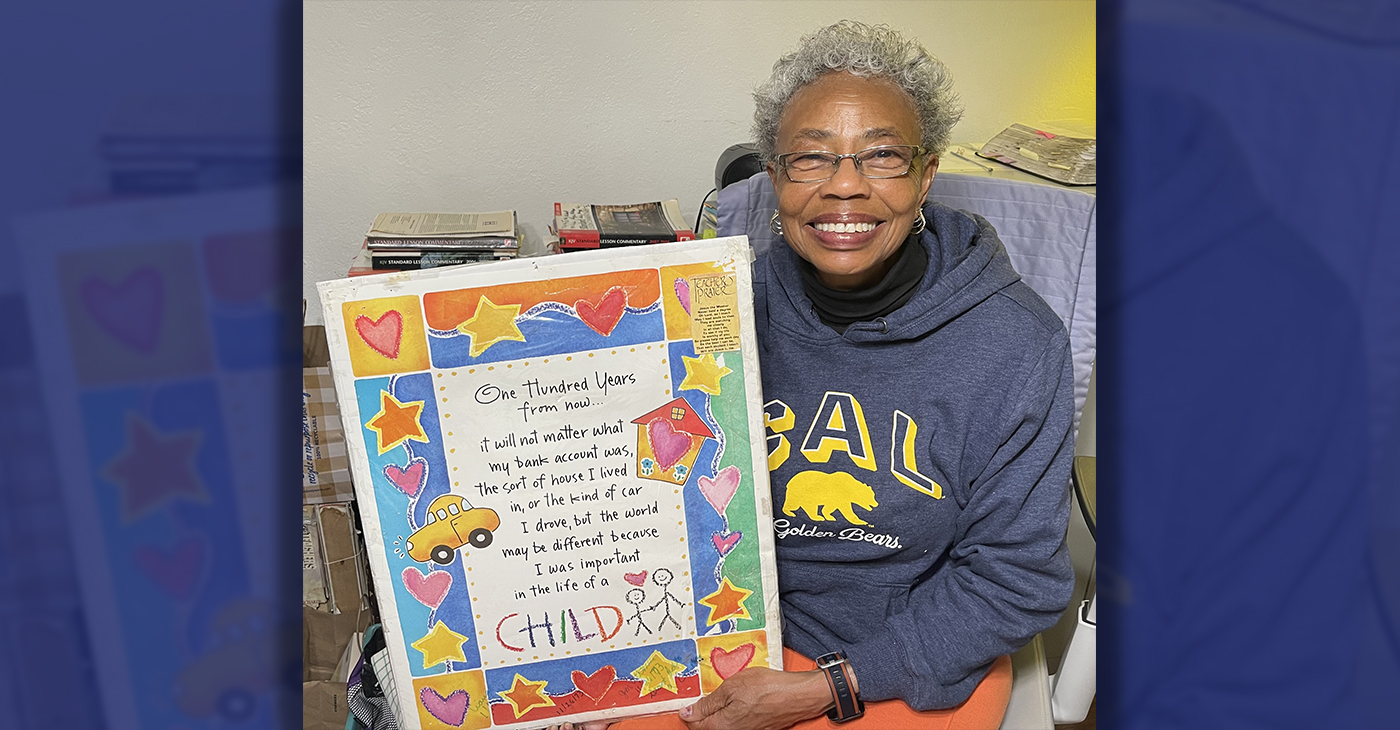
Sister Juanita Matthews
55 Years with Oakland Public School District
The Teacher, Mother, Community Outreach Champion, And Child of God
Juanita Matthews, better known as “Sister Teacher,” is a walking Bible scholar. She moved to California from the great state of Arkansas in 1971. Sister Teacher has a passion for teaching. She has been a member of Bible Fellowship Missionary Baptist Church since 1971. She followed her passion for teaching, and in 1977 became the lead teacher for Adult Class #6. Her motto still today is “Once My Student, Always My Student”.
Beyond her remarkable love for the Lord, Sister Teacher has showcased her love for teaching by working for the Oakland Unified School District for 55 years, all but four of those years spent at Emerson Elementary and Child Development School. She truly cares about her students, making sure they have the tools/supplies needed to learn either at OUSD or Bible Fellowship Missionary Baptist Church.
She’s also had a “Clothes Closet Ministry” for 51 years, making sure her students have sufficient clothing for school. The Clothes Closet Ministry extends past her students, she has been clothing the community for over 50 years as well. She loves the Lord and is a servant on a mission. She is a loving mother to two beautiful children, Sandra and Andre. This is the impact this woman of God has on her church and the community.
-

 Activism3 weeks ago
Activism3 weeks agoOakland Post: Week of March 27 – April 2, 2024
-

 #NNPA BlackPress4 weeks ago
#NNPA BlackPress4 weeks agoCOMMENTARY: D.C. Crime Bill Fails to Address Root Causes of Violence and Incarceration
-

 #NNPA BlackPress4 weeks ago
#NNPA BlackPress4 weeks agoFrom Raids to Revelations: The Dark Turn in Sean ‘Diddy’ Combs’ Saga
-

 #NNPA BlackPress4 weeks ago
#NNPA BlackPress4 weeks agoCOMMENTARY: Lady Day and The Lights!
-

 #NNPA BlackPress4 weeks ago
#NNPA BlackPress4 weeks agoMayor, City Council President React to May 31 Closing of Birmingham-Southern College
-

 #NNPA BlackPress4 weeks ago
#NNPA BlackPress4 weeks agoBaltimore Key Bridge Catastrophe: A City’s Heartbreak and a Nation’s Alarm
-

 #NNPA BlackPress4 weeks ago
#NNPA BlackPress4 weeks agoBaltimore’s Key Bridge Struck by Ship, Collapses into Water
-

 #NNPA BlackPress4 weeks ago
#NNPA BlackPress4 weeks agoBeloved Actor and Activist Louis Cameron Gossett Jr. Dies at 87


